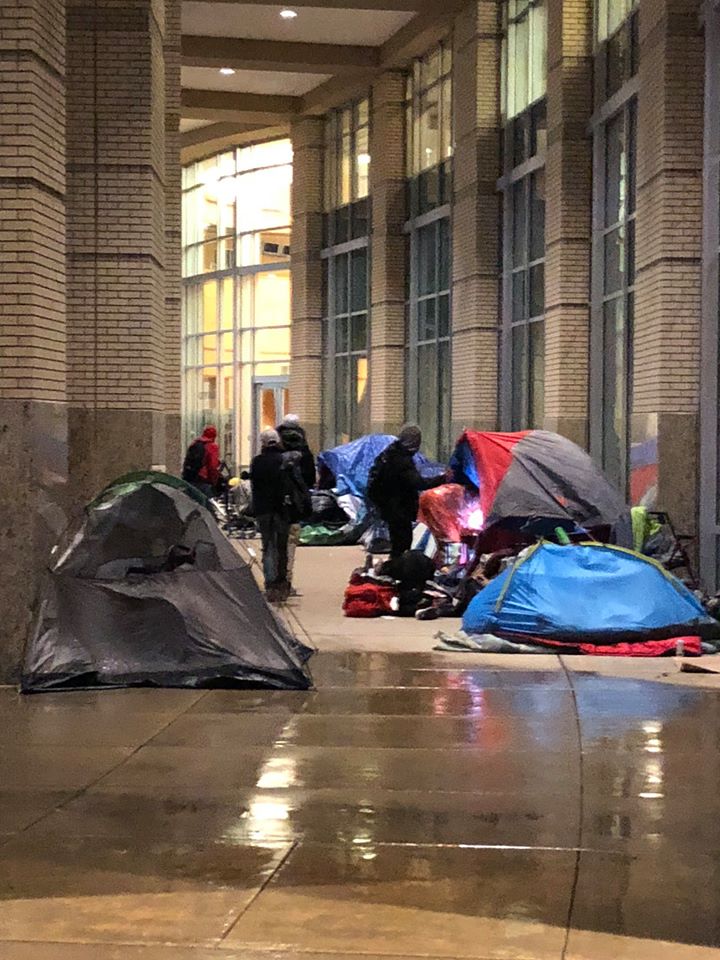
Chula Vista High School in Chula Vista. (SDR)
Teacher Housing Measures Failing Across the State
‘Most Californians are tired of having so many tax increases’
By Evan Symon, March 6, 2020 5:44 am
Teacher housing, which would give free or reduced price units in new housing blocks for teachers in certain districts, are faring poorly in the four districts that had such housing measures on the ballot on Tuesday.
Four ballot measures currently below 55% thresholds
Chula Vista Elementary School District (San Diego County), East Side Union High School District (Santa Clara County), Patterson Joint Unified School District (Stanislaus and Santa Clara County), and Soledad Unified School District (Monterey County) had all attempted bond votes on March 3rd, but none have made it past the 55% threshold of votes needed as of Thursday.
Voting results ranged from being close to being soundly defeated. Patterson Joint Union’s Measure N fell completely apart, with not even 1/3rd of voters voting yes on it. While votes are still due, it’s widely seen as an insurmountable lead. The district had planned on building a few dozen apartment units and setting aside some pay to build up a down payment for a home for teachers.
Other districts are much more closer but still face an uphill battle in more votes.
Chula Vista’s Measure M is currently at a 52.6% total with all precincts reporting in and is currently at the mercy of 350,000 San Diego mail-in ballots. Measure M, in addition to teacher housing, includes various school district improvements. $65 million of the $300 million bond would go to building apartments that would be discounted to teachers. The cost to taxpayers would be approximately $30 out of every $100,000 in assessed property owned.
Monterey’s Soledad Unified School District is currently down by 3% from the needed threshold for their Measure E. Mail-in ballots are still being counted, by many officials aren’t signaling high hopes for it to get enough in. Measure E would cost taxpayers about the same as San Diego’s plan and would set aside S11.5 million for staff housing.
And finally Measure J in San Jose’s East Side District is currently the closest, currently only 1% behind in polls. With a $60 million bond to build housing for 100 teachers on the line line, officials are hoping, like all the others, that votes by mail will make up for the difference. It should be noted that historically this is unlikely, and that in San Jose’s case, housing was designed partially as a revenue stream for the school district, with a few million on average being estimated for rents going to the district.
Teacher housing measure costs and taxpayer wariness
“Most Californians are tired of having so many tax increases,” said California tax specialist Horace Wilson. “And now they’re seeing teacher housing on ballots and they’re thinking enough is enough.”
“The housing crisis is huge, as are teacher shortages and school districts seeing less money coming in. But this could lead to a messy system. If a teacher is fired, are they kicked out and made homeless? Are non-teachers allowed to rent any open rooms? Would this affect their jobs? There’s a lot of open questions that were never answered.”
“A lot of these aces are close, and a few still have a chance to get enough if the odds are on their side. But so far it looks like Californians across the state have said that this isn’t a good idea. If all four do go down, which looks more likely than not right now, a lot of school districts will have to look elsewhere to solve problems. Maybe even without involving taxpayers.”
It should be noted that many of the school housing measures were inspired by the passage of Daly City’s Jefferson Union High School District teacher housing measure in 2018. A 122 unit apartment complex, paid for by a $33 million bond, is currently being built. Many planned teacher housing measures also inspired by Daly City may be taking another look at their own proposals following Tuesday’s results.
Final vote results are expected in the next several weeks.
- Plastic Ban Bill Passes Senate Committee - April 19, 2024
- ‘Fix Prop 47’ Initiative Receives Over 900,000 Signatures – Qualifies for November Ballot - April 18, 2024
- Google Fires 28 for Anti-Israel Sit-in at Work - April 18, 2024





“If a teacher is fired, are they kicked out and made homeless?”
This is laughable! Teachers are RARELY fired or even disciplined for their misdeeds or inability to teach competently! Very rarely are any fired for sex abuse, but if that happens, they are most likely in jail.
Having said this, I am roundly opposed to giving ANY more money to schools, for ANY reason, least of all this one! More and more money is thrown away on schools, with dismal results, and rarely do the results improve after more money is given to schools.
First, Proposition 39 bonds (55%) are for “school facilities projects,” not workforce housing. This is the scheme of one Dale Scott who’s trying to generate more income for himself by selling the idea to school districts.
Second, general obligation bonds (bonds that are secured by enforced, unlimited property taxes) may NOT be used for revenue generating schemes. Think about it. Taxpayers would be forced to pay for construction of housing that’s going to generate rental income back to the school district. Taxpayers pay not only the costs, but the interest on those bonds for 25 to 40 years, while the school district taps a new revenue stream.
Third, no teachers will ever live in subsidized housing. They earn too much money to qualify. Los Angeles Unified tried this about 10 years ago. All the housing it built houses non-academic workers, like custodial and food service employees. No teacher has ever lived in that housing. But Los Angeles Unified used a different kind of bonds, not Proposition 39 bonds.
As of yet, no one has challenged the scheme in court. If one of these passes, that will likely change.